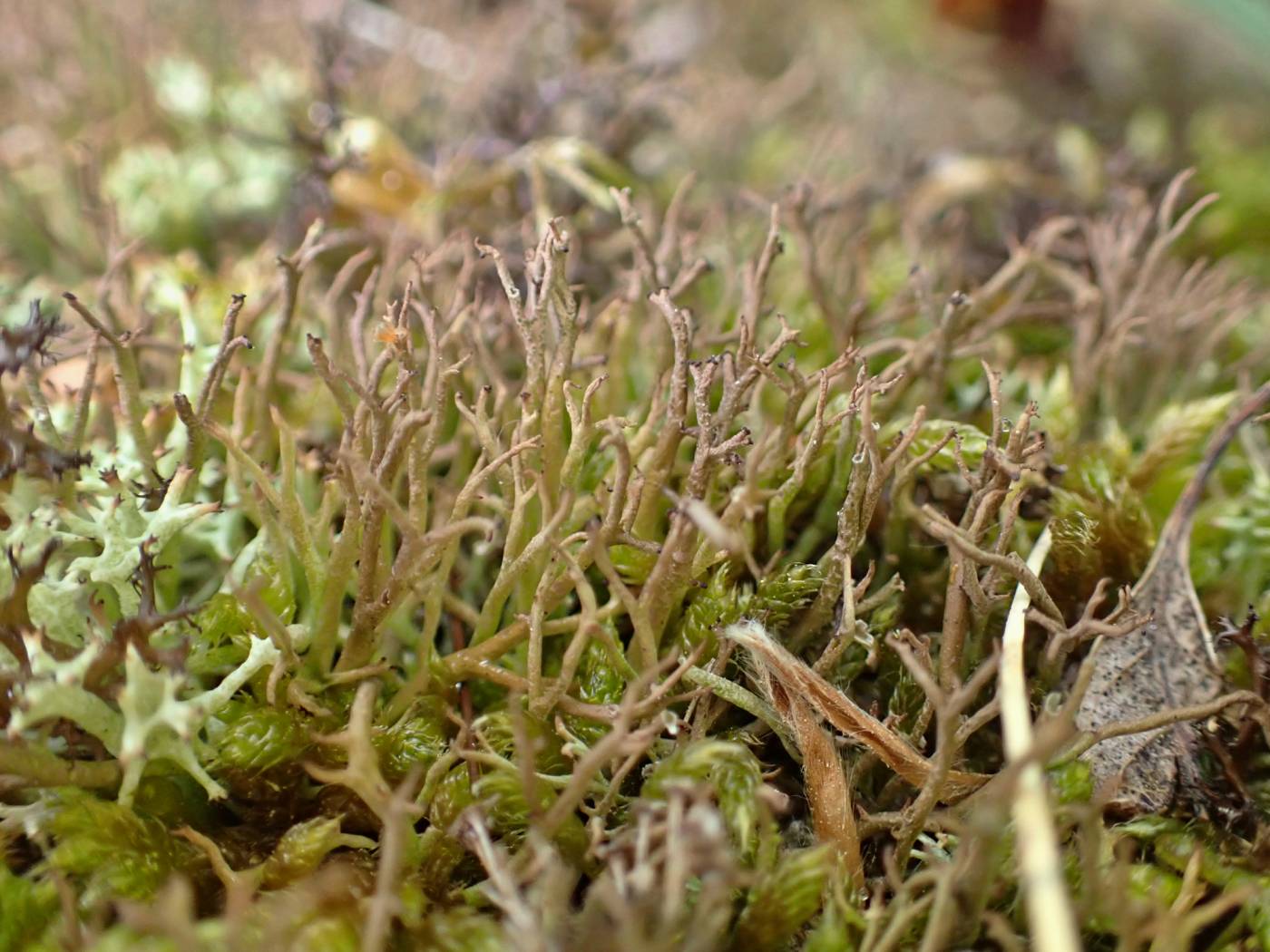Cladonia furcata is characterized by branched, grey to brown podetia covered by a more or less continuous cortex. Squamules on podetia are usually present but often very few and only in the basal part. However, there are also richly squamulose forms. Seven chemotypes have been recognized by Burgaz et al. (2020) with fumarprotocetraric and/or psoromic acid as the main metabolites, sometimes with accessory atranorin or rarely also bourgeanic acid. Its characteristic metabolite in the Czech Republic is fumarprotocetraric acid (Pd+ red) while atranorin, which is typically present in C. rangiformis, is much rarer. Atranorin is more common in specimens growing, e.g., on xerothermic and calcareous stands which are sometimes distinguished as a separate species C. subrangiformis (Ahti & Stenroos 2013). However, its taxonomic delimitation is unclear, without molecular support and there are intermediate forms (Pino-Bodas et al. 2015, Nimis et al. 2018).
C. furcata grows on acidic soil, more rarely also on calcareous soil, in open habitats, such as heathlands, grasslands and around rock outcrops, but also in open forests from lowlands to mountains. More rarely, it may also occur on decaying wood and tree bases. Its distribution is subcosmopolitan, including the tropics. It is common in the Czech Republic.
Cladonia furcata is a variable taxon, sometimes difficult to differentiate from C. rangiformis, C. scabriuscula and some forms of C. gracilis. Cladonia rangiformis is characterized by more richly branched podetia of lighter colour with discontinuous cortex and algal layer. It can reliably be identified based on secondary metabolites. The branched morphotypes of C. gracilis never form open axils.
Literature: Burgaz A. R., Ahti T. & Pino-Bodas R. (2020): Mediterranean Cladoniaceae. – Sociedad Española de Liquenología (SEL), Madrid. Ahti T. & Stenroos S. (2013): Cladoniaceae. – In: Ahti T., Stenroos S. & Moberg R. [eds], Nordic Lichen Flora 5: 87–89. Pino-Bodas R., Burgaz A. R., Martín M. P., Ahti T. & Stenroos S., Wedin M. & Lumbsch H. T. (2015). The phenotypic features used for distinguishing species within the Cladonia furcata complex are highly homoplasious. – Lichenologist 47: 287–303. Nimis P. L., Hafellner J., Roux C., Clerc P., Mayrhofer H., Martellos S. & Bilovitz P. O. (2018): The lichens of the Alps – an annotated checklist. – Mycokeys 31: 1–634.
taxonomic classification:Ascomycota → Lecanoromycetes → Lecanorales → Cladoniaceae → Cladonia
most frequented synonyms:Cladonia subrangiformisRed List (Liška & Palice 2010):LC – least concern
Occurrence in the Czech Republic
All records: 1246, confirmed 254. One click on a selected square displays particular record(s), including their source(s).
